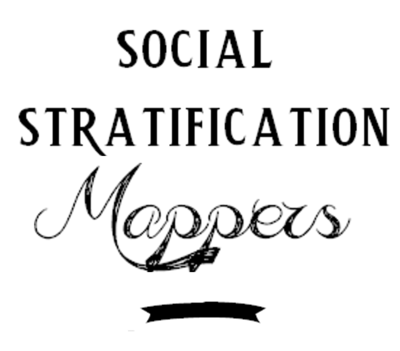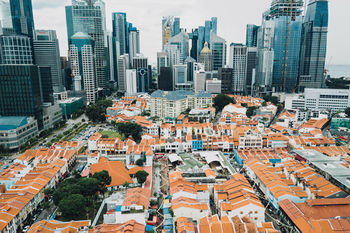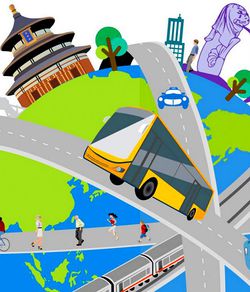Project Groups
|
|
|
|
|
|
Project Groups
Please change Your Team name to your project topic and change student name to your own name
| Project Team | Project Title/Description | Project Artifacts | Project Member |
|---|---|---|---|
|
Project title: Provide eyes catching title. However, it should reflect the content or/and the focus of your project Abstract The abstract should not be more than 350 words. |
| ||
|
Cyber-security: you are in more danger than you can possibly imagine Cyber-attacks are becoming increasingly sophisticated. Coupled with the growing amount of data being generated by individuals, corporations and governments, well-orchestrated attacks could potentially cause major disruptions to any country, such as gaining access to national defense systems. According to David Koh, CEO of Singapore’s Cyber Security Agency, Singaporeans are largely aware of cybersecurity threats but do not take the necessary precautions, which may be due to complacency stemming from Singapore's reputation as a safe country1. Hence, public education is still required to urge individuals into taking preventive measures. This project will contribute to that end by providing interactive and interesting visulisations of cyber-attacks that can engage members of the public. 1https://govinsider.asia/innovation/cyber-war-csa-singapore-david-koh/
|
| ||
|
World Energy Production & Consumption: For 66 years, the BP Statistical Review of World Energy has provided high-quality objective and globally consistent data on world energy markets. The review is one of the most widely respected and authoritative publications in the field of energy economics, used for reference by the media, academia, world governments and energy companies. A new edition is published every June. Join us as we explore the rich data-set provided by BP & study the dynamics of regional energy production and consumption of the different countries of the world to identify the dominant as well as weaker player in the world energy market. |
| ||
|
Perceiving Evil: The Study of the Corruption Perception Index
Is it true that a corrupted country is naturally poor? Are GDP growth linked with corruption? Does the gender composition of the country affects corruption? We will try to find out here. |
| ||
|
Water For Life: Effect Of Rainfall On India's Crop Productivity Climate change has a serious impact on the availability of various resources on the earth especially water, which sustains life on this planet. One occupation that has experienced a direct impact due to these increasing climate fluctuations is Agriculture. Especially in a country like India where water, the most critical agricultural input is scarce. Nearly 55% of the total cultivated areas in India do not have irrigation facilities. And hence Indian farmers are highly dependent on rainfall as rainfall is the fundamental driver of water availability for agriculture. Changes in precipitation affect the quality and quantity of the agriculture produce in direct proportions of the rainfall received. In this study, we intend to analyse India’s rainfall pattern for past few years using various exploratory techniques, primarily focusing on apt visualizations to reveal the undiscovered truth. Over 80% of the annual rainfall is received in the four rainy months of June to September. There is great regional and temporal variation in the distribution of rainfall and although the monsoons affect most parts of India, the amount of rainfall varies from heavy to scanty on different parts. The primary motive of our analysis is to scrutinize the effect of irregularities in the rainfall pattern on agricultural productivity in India. Through our analysis, we would like to derive meaningful insights that foster our understanding about the most affected regions and crops because of the variability in climactic change so that actionable recommendations could be sought from the final developed application. |
| ||
|
Exploring Inequality’s Geographic Dimension Across Neighbourhoods in Singapore: Its Driving Forces & Touch Points Amidst the recent debate over growing social inequality in Singapore such as the distinct clustering of elite schools and varying access to resources, the dangers of hardening social mobility pose as a concern for a culturally diverse nation that has upheld its values of social cohesion and racial harmony. In bridging social divide, Singapore has put in place various community programmes to create shared experiences and promote inter-communities mixing. Using geospatial techniques in R, the dashboard serves to explore the geographic dimension of social inequality, by mapping the extent of social segregation and accessibility to important spaces across neighbourhoods. This is done in three approaches. First, we analyse whether there exists social segregation across subzones using the Entropy-Based Diversity Index, based on three dimensions of inequality - race, age and housing type. Second, using spatial point pattern analysis at the HDB postal code level, we visualise whether there exist housing type clusters that could point towards social inequality and whether certain towns are overpopulated with a specific housing type. Third, using the Hansen Accessibility Model, we map out available touch points that could facilitate social mixing, particularly the ease of access to primary schools. We also see whether there is any variation in accessibility between the elite and mainstream primary schools for different housing types. This is because an important aspect of social inequality is having reasonably fair access to resources. Lastly, we move into solutioning and explore whether there exist sufficient common spaces that allow for social mixing, such as parks, and identify areas that are underserved for urban planners to focus their attention on for future space planning. |
| ||
|
Buy More! – Maximizing Revenues Taking advantage of data is key to ensuring the survival of an e-commerce retail business. Through the visualization of the spending habits of customers and the visualization of the results from various machine learning algorithms, insights can be gathered as to which customers the retailer should target and what type of products should be kept in-stock to maximize sales. An e-commerce company in the United Kingdom has provided their transaction data from 1 December 2010 to 9 December 2011. This company mainly has wholesalers as its customers. Based on the data provided, the company’s client portfolio is mainly based in the United Kingdom. On the market, there are various customer intelligence platforms available: “DataSift”, “SAS Customer Intelligence”, “Accenture Insights Platform”, etc. However, none of them are offer an integrated bespoke solution for our data on hand. Our motivation is to build an entirely bespoke application that would allow the company to fully analyse their data right at the onset and thus maximize the revenue of the company. |
| ||
|
Singapore Property Market Watch - Your new tool to visualize SG Property Trend "Have your heard that Singapore IRAS just increased Additional Stamp Duty rate (ABSD)?! And US Federal Reserve will increase the interest-rate again?! How does Singapore Property market going to change now, we wanna see market trend leh, but how?" There is a deficiency of Market Watch tool for analysing the real estate market data as well as the trends properly. As it is very important to show the trendline cross different years and time, however, these data are still in table formats and the visualizations are quite basic, most of trends are illustrated statically, static graphs are not explanatory enough to show a full picture of changes, which sets barriers for readers from getting any useful insights and findings. To better understand how the Real Estate market price moves cross different type of sales, property types and planning areas in the last 20+ years. Our team will provide an unbiased visualization tool for readers to understand and compare the Property Market pattern changing overtime.
|
| ||
|
Group 8: Given the growing importance on this area, our project seeks to encapsulate existing data and present it visually in a simple, understandable manner, to help further efforts in driving the agenda. Using graphical techniques complemented with some level of statistical modelling in R, our dashboard will provide a view on changing patterns in key indicators relating to gender equality and women empowerment with time, as well as attempt to highlight important variables which aid the growth of such indicators. |
| ||
|
Contagious diseases analysis in US
|
| ||
|
Hello Shiny! - Voice integrated Visual analytics Global migration flows: With the world shrinking by the day with technology and humans being more than ever ready to scale distances in quests to follow a career path or to escape political persecution and war or in search of better quality of life or to be closer to family or friends, Migration and the resulting ethnic and racial diversity are amongst the most emotive subjects in contemporary societies. In recent times, the political salience of migration has strongly increased due to uproar of natives and other factors. For origin societies, the departure of people raises concern about the 'brain drain' on the one hand. For receiving societies, the settlement of migrant groups and the formation of ethnic minorities can fundamentally change the social, cultural, economic dimensions and cause lack of resources for the natives. Using R’s geospatial and quadrant analysis techniques, we aimed to delve into the migrant numbers data over the years from country to country conjoined with the remittances according to the world bank by them to the origin locations. Migration and remittance numbers will be analysed grouping the locations on continent, region and socio-economic status scales to identify relations between the factors separating the dominating and the dominated societies. A balance model was applied to analyze the migration flows between countries of the same development level. The visualizations are linked between each other and wrapped on to an interactive application which can be controlled by user voice inputs, we will be using a Javascript library interfaced to R shiny to control the application’s select, filter and switch inputs. |
| ||
|
New York City Crime Watch Crime is an act punishable by law that has been timeless is prevalent in every society. Crime activities are recorded for crime analysis which involves systematic analysis for identifying and analyzing patterns and trends in crime and disorder. For our crime analysis, we have used the New York Police Department (NYPD) crime data for the which spans crimes records across the 5 boroughs of NYC. We aim to provide a visual tool to observe the crime patterns with respect to time and location. On doing this, the rate of crime can be analyzed and hence forecasted for law enforcement agencies can estimate the right number of resources to deploy.
|
| ||
|
Group 12
Through our visualizations, we seek to utilize existing data to derive meaningful insights over how various socioeconomic factors have had an impact on development of different nations. Using graphical techniques in R, our dashboard will feature analysis on key indicators relating to financial, educational, gender, health, industry & demographic as well as attempt to highlight important variables which aid their growth. |
| ||
|
Man - KIND? The Organization for Economic Co-operation and Development is an intergovernmental economic organization with 37 member countries, founded in 1961 to stimulate economic progress and world trade. Most OECD members are high-income economies with a very high Human Development Index (HDI) and are regarded as developed countries. As of 2017, the OECD member states collectively comprised 62.2% of global nominal GDP (US$49.6 trillion) and 42.8% of global GDP ($54.2 trillion) at purchasing power parity.
|
| ||
|
Towards Greater Transparency for the Global Arms Trade The global arms trade has been a major concern as the international transfer of arms between states could lead to wars, crimes against humanity and contribute to serious violations of international human rights. The Stockholm International Peace Research Institute (SIPRI) collects data on arms transfers between regions and states aimed at increasing the fundamental understanding of the impact of arms transfers and to support policymaking. Based on the latest publication by SIPRI, a rising trend is observed in the volume of international transfers of major weapons, with the highest volume of arm transfers recorded between 2013 to 2017, since 1990. Our project aims to use interactive visualisation to identify the trends and patterns in the international arms transfers and to explore the arms trade dependencies between countries and regions.
|
| ||
|
Bird, Where Art Thou? Animal migration has long received much attention as a research topic in biology. Information about animal movement serves to allow us to understand animal behavior and their interactions with each other and the environment. In addition, it allows us to address environmental challenges such as climate and land use change. Understanding animal migration helps conservationists to conserve these animals through the protection of their habitats and their resources. An interactive visual analytics approach would provide valuable insights to the scientific community on the migration of these animals.
|
| ||
|
|
Urban Pulse —— Visualization on Beijing's Traffic
|
| |
|
GeBiz: Who supplies to the needs of Singapore? Government Procurement is the procurement of goods and services on behalf of a public authority. As per policy, the procurements need to be done through an issue of public Tenders to prevent corruption, wastage, and local protectionism. GeBiz is the Singapore government's one stop portal for the above purpose. The data of past procurements are made available for the public in the Data.gov.sg portal. It is difficult to identify bias in such data available that have multiple transactions. Since a transaction involves various levels of the government, the bias may not be obvious while looking at the issuing authority and the supplier alone. We propose an approach which combines network analysis, association analysis, and visual analytics to make this process easier. Traditionally, Association analysis has been used to identify relations between products purchased together. It is also applicable to any data that follows the format of multiple entities and a common transaction that links them together. In our case, the entities involved are the issuing agency and the supplier. The current visualizations treat all entities involved to be of the same category, thus making the visualization less intuitive. We want to come up with a visualization that can overcome this limitation. |
| ||
|
A sanctuary for women – Is there one? Crime against women in India is very old social issue which is prevalent in almost all societies. It is increasing day by day and deeply rooted in the Indian society even after increasing education level of people. Inefficient legal system, weak rules of laws and patriarchal society in the second most populous country are few factors attributing and triggering increase in crime against women. The recent public outcry following a brutal gang rape of a young woman in India's national capital was a watershed moment in the world's largest democracy. The hype in the media across the world compels us to believe that crimes against women in India is on a dramatic rise.In our analysis, we take a step forward in this direction to discover the hidden truth in the Women Crime data using visualization techniques to better understand crime occurrences against women in India. |
| ||
|
Male or Female, that is a question!! Based on “The Global Gender Gap Report 2017”, China remains the world’s lowest ranked country with regard to the gender gap in its sex ratio at birth. Tracing back to previous census data and demographic statistics, sex ratio at birth in China has been on the high side since the early 1980s and rising continuously. In this project, We try to find out the socio-economic and cultural factors that leading to the increase of the sex ration at birth, which may be meaningful to curb the increase of birth sex ratio and restore it to normal level. |
| ||
|
The air quality in China To understand the improvement of air quality of developed cities and the impact of air quality on the health of residents, we choose four first-tier cities (Beijing, Shanghai, Shenzhen and Guangzhou) and 15 new first-tier cities (Chengdu, Hangzhou, Wuhan, Nanjing, Chongqing, Tianjin, Suzhou, Xian, Changsha, Shenyang, Qingdao, Zhengzhou, Dalian, Dongguan and Ningbo) to analyze. |
| ||
|
MOVE TO WHAT MOVES YOU! With inflation in prices of land and an increase in human population, the Real Estate Market in Singapore has seen high volatility over the years. We observe that the market has significantly higher demand than supply, thereby creating a dilemma for people about the kind of property they should invest in. Our project is based on real estate sales data for 2017-2018 and provides transaction details, data on Flat Model, Flat Type, Lease and other relevant details. Through the scope of this project, we intend to provide a detailed understanding of the real estate market so that the users of the application can make a more informed decision. We believe that real estate agents and brokers, economists, investors and other enthusiasts can use the application to understand market trends and make investment decisions. |
| ||
|
Small loan, Big difference Kiva is an international non-profit, founded in 2005 and based in San Francisco, with a mission to connect people through lending to alleviate poverty. Kiva celebrates and supports people looking to create a better future for themselves, their families and their communities. What we try to do is helping the website extend to more countries and helping more people solve the survival problems. |
| ||
|
MAKE THE WORLD A BETTER PLACE TO “BREATHE”
Our project aims to create a collaborative interface to track for everything that is happening in the world and to which extent air quality can be affected by these factors. These factors may cover most of economic, social, political, cultural areas, so that we will be able to look at air pollution issues from a bigger picture instead of air itself.
|
| ||
|
CricViz: Indian Premier League Cricket, the second most popular sport in the world, is a bat and ball game played between two teams, 11 players each, on a field which has a rectangular 22-yard-long pitch in the center. The game is played by 120 million players worldwide and the purpose of the game is to score more runs than your opposing team. The Indian Premier League (IPL), is a professional Twenty20 Cricket League in India contested during April and May of every year by teams representing Indian cities and some states. The league was founded by the Board of Control for Cricket in India (BCCI) in 2008. This project is about exploring the statistics of historical IPL data of 8 seasons (2008-16) to understand patterns in individual player performance, team strengths & weaknesses, find the Most Valuable Players (MVPs), and thus suggest the best IPL team for each season, amongst others.
|
| ||
|
Singapore Bus Services - Perfection is not a destination; it is a continuous journey that never ends
Our objective is to suggest ways to increase the efficiency and optimization of the current Singapore bus route by visualizing some of the problems the current Singapore bus services have. Our main target is buses that have unusually long travelling time. If we successfully suggest ways to split the buses, not only we will be able to reduce travelling time (thus reducing cost related problem), but we will also able to reduce overcrowding problem and in turn increase passenger satisfaction.
|
| ||
|
ALWAYS A WAY OUT -- Alternative Trade Markets Analysis for China
In terms of the trade war itself, the world’s two largest economies threating to impose tariffs will have a very direct and negative impact on global economy. Which markets can be potential destination for the exportation giant China? Who can help absorb the surplus supply? Deploying visualisation tools can help find the answer.
|
| ||
|
Airbnb's impact on affordable housing in New York Community groups and housing advocates in cities across the world have begun to sound the alarm about the impact Airbnb is having on affordable housing in their communities, citing concerns about housing supply lost. We chose New York, a typical Airbnb city, as an entry point to understand Airbnb’s impact on housing. We aim at presents a comprehensive visual analysis of 3 years from 2015 to 2017 of Airbnb activity in New York City. It relies on the most comprehensive third-party dataset of Airbnb activity available, and methodologies of visualize and analysis geographical data.
|
|

























